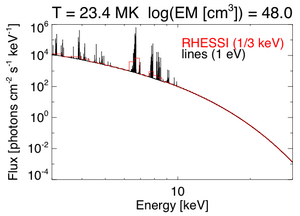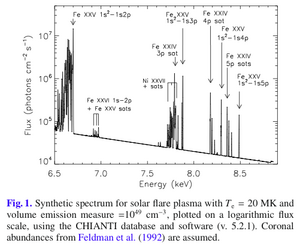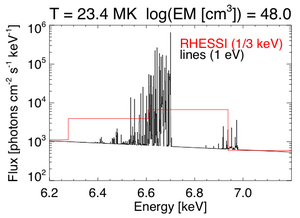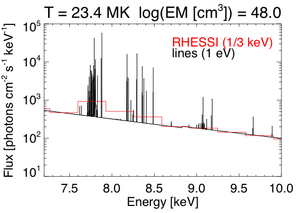Emission Lines
From RHESSI Wiki
(Difference between revisions)
m (added some references) |
m (→References) |
||
| Line 16: | Line 16: | ||
* [[Vth abun - Variable Thermal, Separate Abundances]] | * [[Vth abun - Variable Thermal, Separate Abundances]] | ||
* [http://sprg.ssl.berkeley.edu/~tohban/nuggets/?page=article&article_id=84 Flare Plasma Abundances - New X-ray Observations] | * [http://sprg.ssl.berkeley.edu/~tohban/nuggets/?page=article&article_id=84 Flare Plasma Abundances - New X-ray Observations] | ||
| - | * [ | + | * [[The Fe and Fe/Ni line features I]] |
| - | * [ | + | * [[The Fe and Fe/Ni line features II]] |
Latest revision as of 01:46, 23 January 2010
RHESSI observes X-rays down to 3 keV which includes a number of emission lines. They consist mostly of highly ionized Fe lines. There are no lines above about 10 keV.
 Figure 1: A synthetic thermal spectra created with Chianti showing the thermal continuum along with line emission. The red curve shows what RHESSI should observe. | |


